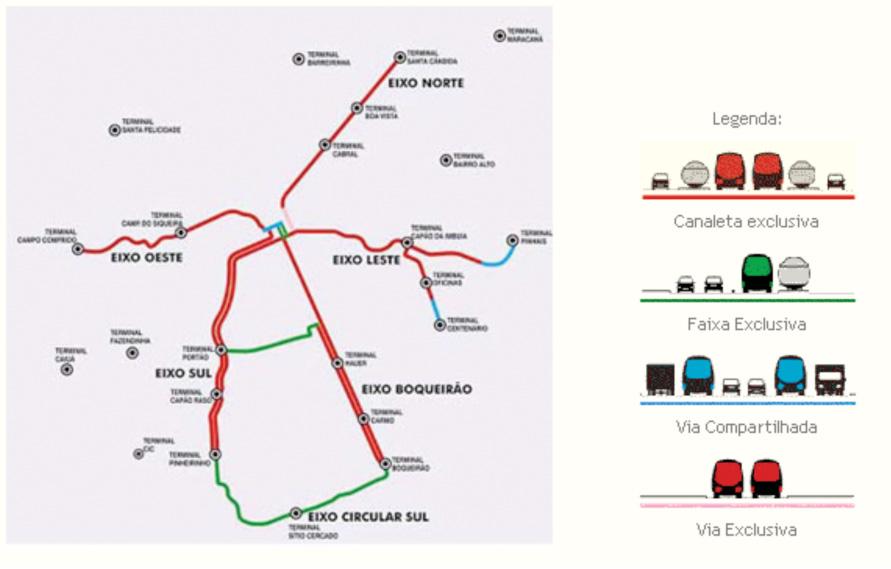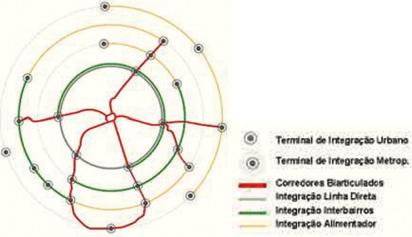
1 minute read
Figure 3.49 The Structure of the Integrated Public Transportation Network in Curitiba, Brazil
Figure 3.49 The Structure of the Integrated Public Transportation Network in Curitiba, Brazil
Source: Urbanização de Curitiba S.A. http://www.urbs.curitiba.pr.gov. br/PORTAL/rit/index.php?pagina=terminais.
Advertisement
in the developing world with a high-capacity BRT system serving fi ve high-density corridors (fi gure 3.49). These arteries were planned and rights-of-way were reserved decades before they were fully developed. This degree of urban foresight required a long-term vision and institutions that had suffi cient capacity and political independence. Ring road or circumferential development places fewer constraints on land development, but encourages dispersed and ineffi cient land consumption. Urban development based on satellite cities is also less than ideal. It takes many years for a satellite city to become self-sustaining, and costly new connections to the city center and other poles are needed.
Land management: Setting aside large lots in primary and secondary markets for high-rise developments is important. Migration and urbanization trends in East Asian cities should be directed toward radial corridors rather than ring road development. Cities that off er good examples of eff ective land management include Hong Kong, China; cities in the Republic of Korea; and Singapore. However, weak land-use policies combined with large lots, signifi cant private vehicle use, and low fuel prices favor urban sprawl and decentralization. In many cities in North America in the second half of the 20th century, these factors decreased the eff ectiveness of public transportation services and created a vicious cycle that reinforced dependence on automobiles.
Financing mechanisms: It is important to be able to capture and transfer revenue derived from infrastructure effi ciently through, for example, a value-based property tax. This approach was institutionalized in Hong Kong, China; Singapore; and Tokyo. In China, a signifi cant share of city revenues comes from land






